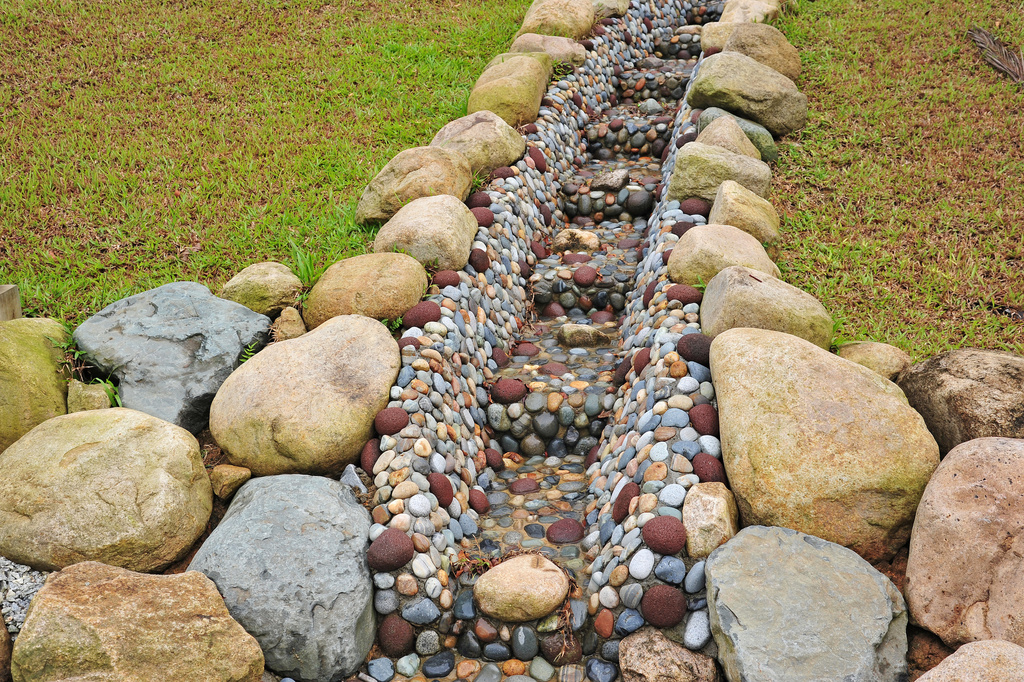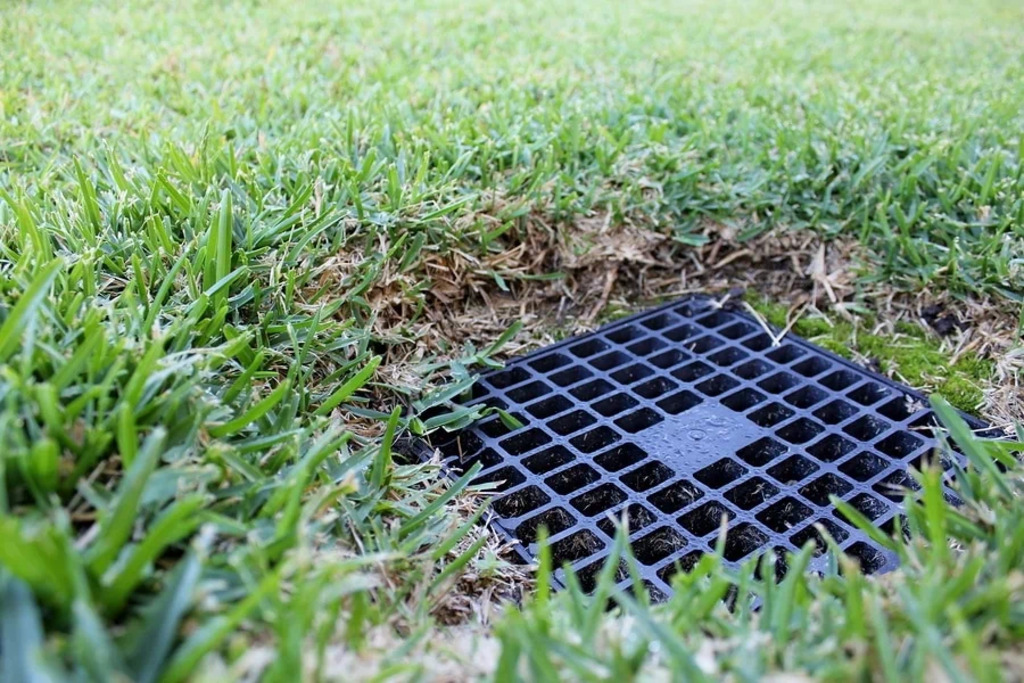Explore this post with:
Maintaining the health and beauty of your landscape necessitates essential, effective drainage systems: these are designed to manage excess water runoff–a crucial function preventing soil erosion; waterlogging, and damage to plants and structures. By guaranteeing proper drainage–you not only protect your property but also foster an environment where plants can thrive.
1. Identifying Drainage Problems

To address drainage issues, you must first identify the problem areas on your property. Poor drainage often manifests through standing water, soil that is soggy or waterlogged and erosion. Such problems may arise in different parts of the landscape such as low-lying areas; slopes; and regions proximate to buildings or paved surfaces. By identifying problem areas early, you can take proactive measures to prevent further damage.
2. Assessing Soil Composition
The soil type on your property significantly influences drainage. High clay content in the soil typically results in poor drainage and potential compaction, which induces water runoff and erosion. Conversely, sandy soils exhibit fast draining characteristics but might encounter difficulty retaining moisture. To understand the composition of your soil, and thus address its specific characteristics and needs; you can choose appropriate drainage solutions.
3. Investing in Drainage Equipment and Tools
For managing large properties or major drainage work, investing in compact tractors is advantageous. These machines are adept at tasks like grading and trenching, making them suitable for landscaping and drainage installation. While they cover extensive work, essential hand tools remain necessary for smaller jobs and regular upkeep, including shovels, trenching tools, and pipe cutters, which are vital for maintaining drainage systems.
4. Implementing Grading and Sloping Techniques

Fundamental techniques such as grading and sloping redirect water from vulnerable landscape areas. By shaping the terrain into gentle slopes and contours, we guide runoff towards designated drainage points like swales, ditches or storm drains. This process of proper grading and sloping guarantees that water flows away from buildings; foundations; all other structures– thus mitigating risks associated with potential damage caused by water flow or erosion.
5. Installing Surface Drainage Systems
Designers create surface drainage systems to collect and redirect landscape runoff. Typical solutions for surface drainage encompass French drains, channel drains, and surface swales; typically, specialists install these systems in areas susceptible to water accumulation – notably driveways, walkways – as well as low-lying sections of the terrain. Customize the surface drainage systems to match your property’s specific needs and aesthetics.
6. Utilizing Subsurface Drainage Solutions
To address groundwater infiltration and waterlogged soil issues, we install subsurface drainage systems beneath the soil surface. Typically, these systems comprise buried perforated pipes or drains; gravel or drainage fabric surrounds them to enhance water flow. Managing excess groundwater and preventing water from pooling around plants and structures are effectively achieved with subsurface drainage solutions.
7. Maintaining Gutters and Downspouts

Directing rainwater away from your home and landscape’s foundation is essential; it hinges on the proper functionality of gutters and downspouts. Water damage–not to mention soil erosion–can result from overflow or collection near the foundation when gutters are clogged or damaged. For effective drainage, one must undertake regular maintenance: this includes clearing debris from gutters, guaranteeing appropriate connection of downspouts, and directing them away from the property.
8. Choosing Plants for Wet or Dry Conditions
Choosing the appropriate plants for your landscape serves a dual purpose: it mitigates drainage issues and fosters healthy growth. If you inhabit an area with subpar drainage, it is advisable to opt for species that flourish in moist or boggy environments — examples include water-loving perennials, ornamental grasses, and wetland plants. On the other hand; if your soil drains rapidly, favor drought-tolerant flora capable of enduring dry spells without succumbing to wilting or strain.
In areas characterized by inadequate drainage; selecting plant species that thrive in wet or boggy conditions–such as water-loving perennials, ornamental grasses and wetland plants–can contribute significantly to landscape health: they promote healthy growth while simultaneously mitigating issues of poor drainage. Conversely – where soil exhibits fast-draining qualities–one should opt for drought-tolerant vegetation able withstand periods of aridity without wilting or distress; this strategy not only ensures continued vitality but also minimizes stress on the ecosystem overall.
9. Seeking Professional Assistance When Needed
Many drainage issues lend themselves to DIY methods; however, the complexity of certain problems necessitates the involvement of a professional landscaper or drainage contractor. With their requisite know-how, experience and equipment: these experts can not only assess such concerns but also devise effective solutions and guarantee proper installation—an invaluable service for your landscape drainage needs. When you seek professional assistance as required, it is possible to circumvent costly mistakes and secure enduring results for your landscape drainage requirements.
Conclusion
Understanding the importance of drainage systems, identifying their problem areas and implementing appropriate solutions—this is essential to safeguard your property from water damage, erosion and other issues linked with poor drainage. Investing in proper drainage: it’s a guarantee for years of maintaining a healthy—and aesthetically pleasing—landscape; indeed an investment towards its functionality and sustainability. Techniques such as grading & sloping methods; surface or subsurface drainages – coupled with strategic plant selection–all contribute significantly to this comprehensive approach.
In Case You Missed It!
About the Author: Nishant Desai
Nishant Desai has over 8+ years of experience in SEO and blogging. His blogging expertise can organically increase online visibility and traffic for blogs and websites. With his SEO expertise, he has already contributed to iGeeksblog, Firstsportz, and Firstcuriosity. In addition, he can create content strategies, conduct keyword research, publish optimized blogs, and resolve technical issues.




